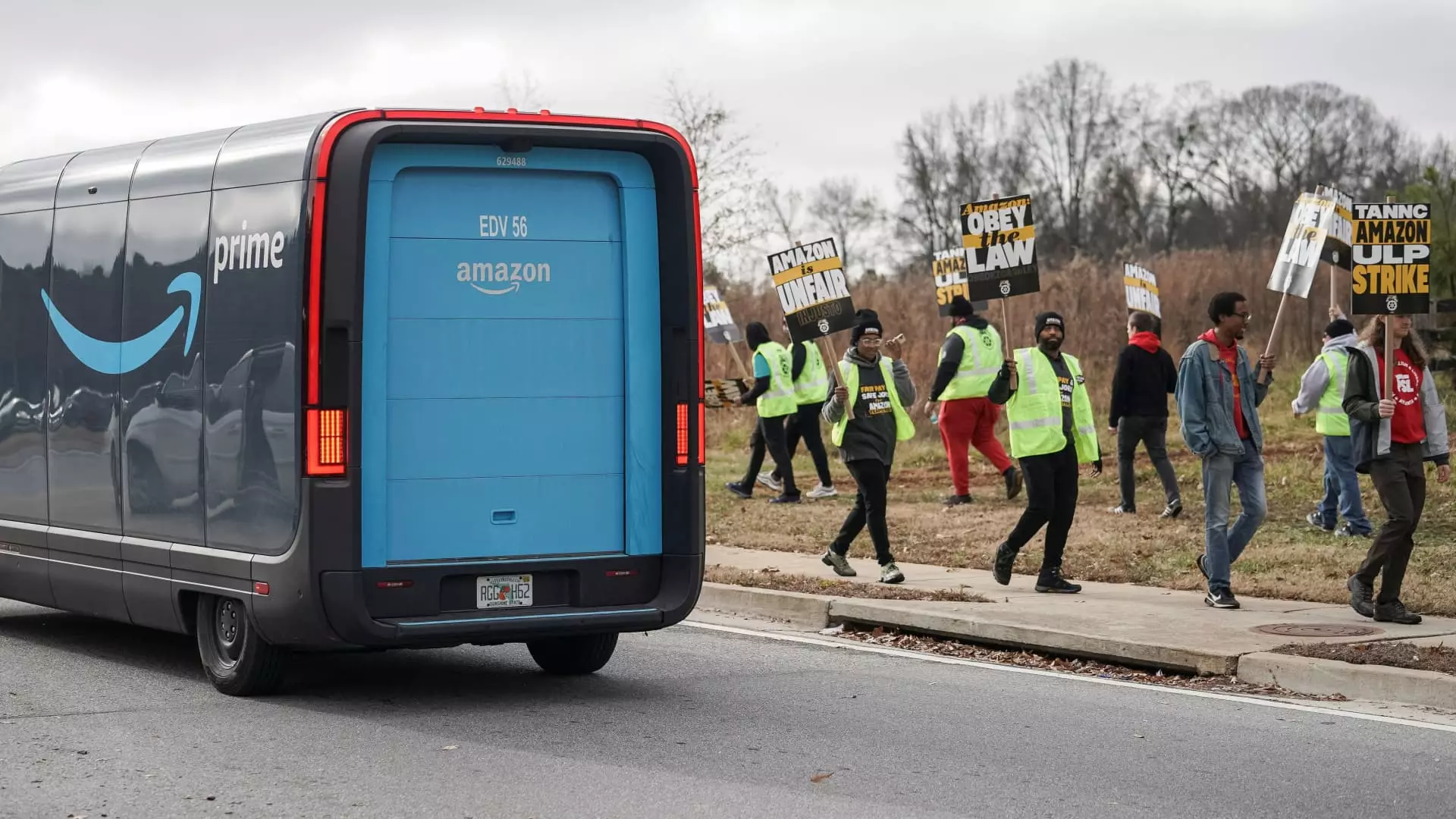In an unprecedented move, workers at seven Amazon facilities scattered across major states such as New York, Georgia, California, and Illinois initiated a strike on Thursday, persisting in their demands for improved wages, better benefits, and safer working environments. This significant action was orchestrated by the Teamsters union, a group representing a crucial segment of the workforce, primarily aiming to compel Amazon to engage in negotiations as the holiday shopping frenzy approaches. With tensions running high, the Teamsters previously set a deadline for negotiations which Amazon seemingly ignored, prompting the current strike.
Sean O’Brien, the President of the Teamsters, articulated the union’s frustration, accusing Amazon of prioritizing profit over employee welfare. He stated, “If your package is delayed during the holidays, you can blame Amazon’s insatiable greed.” This emotional and pointed commentary reveals the stark divide between the corporation’s increasing profits and the struggles faced by its employees. With the holiday season tied to significant consumer spending, the stakes are higher for both parties. A potential delay in deliveries could not only disrupt customers but also serve as a potent reminder of the workers’ plight.
Conversely, Amazon issued a rebuttal, branding the protests as a product of external influences rather than representative of its actual workforce. Company representatives claimed the striking employees were primarily outsiders, labeling the union’s claims misleading. They accused the Teamsters of conducting a disingenuous campaign aimed more at public perception than genuine employee representation. This exchange underscores the tension between corporate leadership and labor factions, with each side presenting a narrative that seeks to justify their stance.
In a workforce of approximately 1.53 million employees, claims regarding the union size—indicating that only a fraction are currently members—highlight the complexities involved in organizing such a vast and diverse employee base. The union’s assertion of nearly 10,000 members signals a significant but still minor portion of the total workforce.
Notably, the labor movement at Amazon is not new, but it has gained momentum over the last few years, particularly following the landmark unionization incident on Staten Island in 2022. This event paved the way for a burgeoning labor movement; however, Amazon’s resolute stance against unionization has created a challenging environment for workers striving for representation. The recent affiliation of the Amazon Labor Union with the Teamsters further amplifies this effort, marking a turning point for sustained resistance against corporate policies perceived as oppressive.
As the strike continues, it unravels deeper questions about labor rights, corporate responsibility, and the future of unionization in America. The outcome of this revolt not only holds implications for Amazon’s operations during a critical sales period but also serves as a litmus test for worker organization across the entire industry. As various stakeholders await Amazon’s next move, the unfolding events highlight the urgent need for dialogue and reform in corporate practices surrounding labor relations. The question remains: will Amazon choose to heed these calls for change, or will it continue to foster an environment ripe for conflict?

